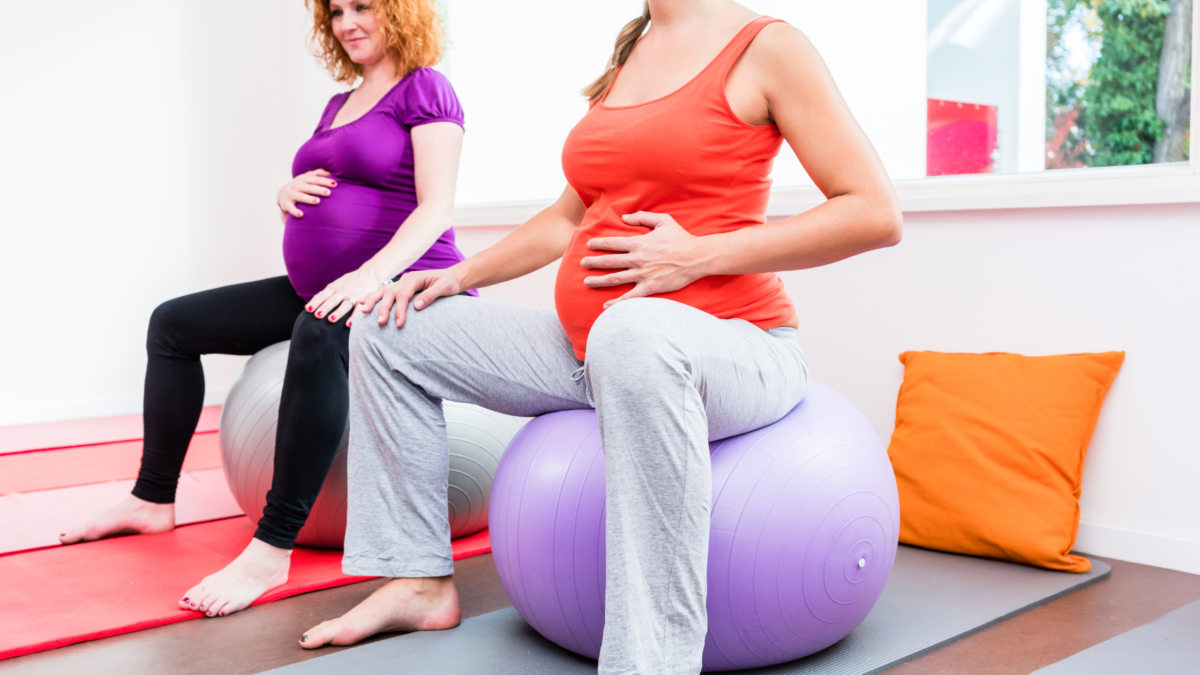


Medically Reviewed By Margaret Etudo. Written By The Vitamins For Woman Team.
Staying active throughout pregnancy can make a difference in how you feel and deliver.

Exercise during pregnancy isn’t just about staying in shape; it’s about supporting your body through one of its most transformative journeys.
From the first flutter of fatigue to the final trimester’s weight shifts, physical activity can relieve discomfort, improve mood, and even lead to easier labour.
However, knowing what exercises are safe and beneficial for each stage of pregnancy is essential.
Whether you’re a lifelong athlete or have never followed a workout routine, pregnancy presents a unique opportunity to connect with your body in powerful ways.
You can navigate your trimesters with strength, confidence, and balance with the right approach and guidance.
Moving your body during pregnancy supports your physical, mental, and emotional well-being benefits that ripple into delivery and postpartum recovery.
As your uterus expands, your centre of gravity shifts, which can lead to lower back strain and pelvic discomfort.
Engaging in low-impact exercises like swimming, walking, and prenatal yoga helps strengthen core muscles and improve posture, offering relief from aches.
Studies show that regular prenatal exercise can also shorten labor time and reduce the need for interventions.
Strengthening your pelvic floor, improving circulation, and boosting endurance all support a smoother birth experience.
Hormonal changes can make pregnancy emotionally draining and physically tiring. But moving your body even for just 20 minutes a day can trigger the release of endorphins, the body’s natural mood lifters.
Women who engage in regular prenatal workouts report better sleep, lower anxiety, and greater emotional balance.
Exercise also helps combat pregnancy fatigue. With improved blood flow and oxygen delivery, your cells get the energy needed to keep you more alert and vibrant.
One of the most common struggles during pregnancy is disrupted sleep. Regular, moderate physical activity can help you fall asleep faster and improve sleep quality by regulating stress hormones and easing bodily discomforts that might otherwise keep you awake.
Staying active during pregnancy helps manage weight gain within healthy limits. Moderate exercise supports metabolism and reduces the risk of excessive weight gain, which is linked to complications like gestational diabetes and high blood pressure.
As your belly grows, posture changes can cause discomfort in your spine and pelvis. Strengthening core muscles with safe movements enhances spinal support and helps you maintain better alignment, reducing pain and risk of strain.
Your body’s needs shift with each trimester, and so should your workouts. Focus on safety, comfort, and movements that support your changing frame.
Early pregnancy often brings nausea, exhaustion, and hormonal changes that make it feel daunting. However, gentle, consistent activity can help ease symptoms and build strength.
Safe first-trimester exercises include walking, swimming, and prenatal yoga. Strength training with light weights or resistance bands supports joint stability and muscle tone.
Keep intensity moderate and listen to your body. This is not the time to push limits.
Include pelvic floor exercises (like Kegels) early on to prepare for labor and prevent urinary incontinence later.
Avoid exercises that involve lying flat on your back for prolonged periods, as this can reduce blood flow to the fetus.
As your baby grows and your belly begins to show, it’s essential to adapt your workouts to maintain safety and comfort.
Many women feel a resurgence of energy during the second trimester, making it a great time to commit to regular movement.
Focus on low-impact cardio, such as brisk walking, stationary cycling, or water aerobics. Strength training can continue, but avoid heavy lifting or exercises that require balance on one leg.
Core work should shift to standing or side-lying positions to prevent supine hypotensive syndrome.
Prenatal yoga classes tailored to this stage help maintain flexibility and support pelvic alignment. Be cautious with balance exercises as your centre of gravity changes.
Choose maternity workout clothes that offer breathable support to accommodate your changing body.
By the third trimester, the goal is to maintain gentle movement, support posture, and prepare for labor.
As your bump becomes more prominent, prioritize exercises that promote circulation, reduce swelling, and alleviate lower back pain.
Walking remains a go-to option, especially in the mornings or cooler parts of the day.
Stretching and prenatal yoga can help release tension in your hips, back, and shoulders. Focus on deep breathing and pelvic tilts to prepare your body for labor.
Swimming or aquatic exercises are excellent because they relieve the pressure on your joints and reduce swelling.
Avoid movements requiring lying on your back, rapid directional changes, or exercises that strain your pelvic ligaments.
Some movements put undue stress on your body or raise risks for pregnancy complications. Know what to skip to keep you and your baby safe.
Hot yoga can cause dangerous overheating and dehydration during pregnancy, so it’s best avoided. Contact sports like soccer or basketball also pose risks of abdominal trauma or falls, making them unsafe during any trimester.
Scuba diving poses risks related to decompression sickness and gas embolisms, which can be harmful to both the mother and the fetus. Because pressure changes underwater affect oxygen levels in the blood, this activity is strongly discouraged during pregnancy.
While HIIT might be effective for fitness gains outside pregnancy, its high-intensity bursts can be too stressful for a pregnant body, especially if you’re not already conditioned. These workouts increase the risk of overheating, joint injuries, and overexertion.
Lying flat on your back after the first trimester can compress the vena cava, a central vein that returns blood to your heart, potentially reducing blood flow to the baby. Avoid crunches, full sit-ups, and similar exercises in this position.
While strength training is beneficial, hefty lifting can strain the abdomen and lower back. Unless you have prior experience and medical clearance, opt for moderate weights and focus on controlled, slow movements with proper form.
Yes, but ease into it. Walking, prenatal yoga, and swimming are excellent starting points. Begin with 10–15 minutes daily and gradually build up to 30 minutes. Always consult with your healthcare provider before starting a new exercise regimen.
Instead of focusing on heart rate, which varies by individual, monitor intensity using the “talk test.” You should maintain a conversation while working out. If you’re gasping or unable to speak, slow down. Some guidelines suggest keeping your heart rate under 140 bpm, but this is no longer a strict moderation rule and how you feel matters more.
Stop exercising and consult your doctor if you experience vaginal bleeding, dizziness, chest pain, regular contractions, shortness of breath before exertion, or decreased fetal movement. It’s also important to rest if you feel unusually fatigued or unwell during your workout.
Staying active during pregnancy is one of the best gifts you can give your future self. The benefits go far beyond the physical; they support emotional balance, labor readiness, and postpartum recovery. You can maintain strength and confidence throughout your pregnancy by choosing safe, trimester-appropriate exercises and listening to your body’s cues.
Always check in with your healthcare provider before starting a new fitness program, and don’t hesitate to modify as needed. Your growing body is performing a miracle move in a way that honors it.

medically reviewed by margaret etudo, BPharm. written by the vitamins for woman team.